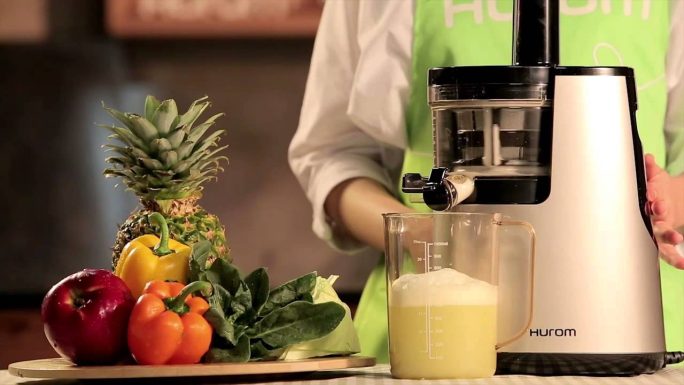When it comes to extracting juices from fruits and vegetables, the slow juicer has been gaining widespread popularity for its ability to preserve nutrients and produce high-quality juice. Unlike conventional centrifugal juicers, which use high-speed spinning blades that generate heat and oxygen, leading to oxidation and nutrient loss, slow juicers operate at much lower speeds.
A slow juicer, also known as a masticating juicer, uses a low-speed auger to extract juice from fruits and vegetables. This method of juicing preserves more of the nutrients and enzymes than high-speed juicers, resulting in a healthier and more flavorful juice. If you’ve recently acquired a slow juicer and want to learn how to use it effectively, this article will provide a step-by-step guide.
What is a Slow Juicer?
A slow juicer is a type of juicer that operates at a slower speed compared to centrifugal juicers. It uses masticating or chewing to extract juice from fruits and vegetables, resulting in higher nutrient retention and yield.
How To Use Slow Juicer?

Here’s a step-by-step guide on how to use a slow juicer.
1. Preparing the Produce
Before you begin juicing, it’s important to properly prepare your fruits and vegetables. Start by washing them thoroughly to remove any dirt or debris. If necessary, peel or remove any seeds or pits. Cut the produce into small, manageable pieces that will fit easily into the juicer’s chute.
2. Assembling the Juicer
Next, assemble the juicer according to the manufacturer’s instructions. This typically involves attaching the pulp container and juice jug to the juicer and making sure that the lid is securely in place.
3. Juicing
Once the juicer is assembled, turn it on and begin adding the produce to the chute. Start with the softer fruits and vegetables such as berries or leafy greens, then add the harder fruits and vegetables such as apples or carrots. The auger will slowly grind and press the produce to extract the juice, and the juice will be collected in the juice jug while the pulp is collected in the pulp container.
4. Cleaning
After juicing, it’s important to clean the juicer thoroughly to prevent the buildup of bacteria and mold. Start by unplugging the juicer and disassembling it. Rinse all parts with water and use a brush or sponge to remove any remaining bits of produce. Dry the parts completely before reassembling the juicer and storing it away.
Benefits of Using a Slow Juicer
Slow juicers offer several benefits, including:
- Nutrient retention: The slow juicing process minimizes heat and oxidation, helping preserve the juice’s nutrients and enzymes.
- Higher juice yield: Slow juicers efficiently extract juice, yielding higher than other juicers.
- Versatility: Slow juicers can handle various produce, including leafy greens, hard fruits, and vegetables.
- Reduced foam and separation: Slow juicers produce less foam and separation in the juice, leading to a smoother texture.
Frequently Asked Questions (FAQs)
- Can I juice leafy greens with a slow juicer?
- Yes, slow juicers are excellent for juicing leafy greens such as spinach, kale, and wheatgrass.
- Can I juice frozen fruits and vegetables?
- It is recommended to use fresh produce for optimal juicing results. Some slow juicers may handle small amounts of frozen fruits, but check the manufacturer’s instructions.
- Is it normal for the slow juicer to operate quietly?
- Yes, slow juicers typically operate quietly compared to centrifugal juicers.
- Can I use a slow juicer to make nut milk or sorbets?
- Some slow juicers come with attachments specifically designed for making nut milk or sorbets. Check if your model supports these functions.
- Can I juice citrus fruits with the peel using a slow juicer?
- It’s generally recommended to remove the peel from citrus fruits before juicing to avoid bitterness. However, leaving a small amount of the peel can add zest to the juice.
Benefits of Slow Juicing
The benefits of slow juicing are numerous and far-reaching, making it a popular choice for health-conscious individuals. Unlike traditional high-speed juicers, slow juicers operate at a slower speed, which minimizes heat and oxidation during the juicing process. This results in higher nutrient retention and better extraction of enzymes and vitamins from fruits and vegetables. Slow juicing also produces a higher yield of juice, meaning you can get more out of your produce and reduce waste.
Furthermore, slow juicing creates a smoother juice with less foam and separation, enhancing the overall taste and texture. The lower speed also reduces noise levels, making it an ideal option for those living in shared spaces or seeking a quieter juicing experience. Additionally, the extended shelf life of juices made with a slow juicer allows for convenient batch preparation without sacrificing freshness or nutritional value. Overall, the benefits of slow juicing make it an attractive method for maximizing health benefits while enjoying delicious, nutrient-rich juices.
Choosing the Right Produce
When it comes to using a slow juicer, choosing the right produce is essential for achieving the best results. One key aspect to consider is the freshness of the fruits and vegetables. Opting for locally sourced, organic produce can not only enhance the flavor and nutritional value of your juice but also support local farmers and sustainable agriculture practices. Additionally, selecting seasonal produce ensures that you are getting fruits and vegetables at their peak in terms of taste and nutrients.
Another crucial factor to keep in mind when choosing produce for your slow juicer is variety. Mixing different types of fruits and vegetables can create unique flavor profiles and provide a wider range of nutrients in your juice. For example, combining sweet fruits like apples or pineapples with leafy greens like kale or spinach can offer a balance of sweetness and earthy flavors while delivering a diverse array of vitamins, minerals, and antioxidants. Ultimately, being mindful about the types of produce you use in your slow juicer can result in more vibrant juices that cater to both your taste buds and nutritional needs.
Operating Your Slow Juicer
Operating your slow juicer can be a transformative experience, as it allows you to harness the natural goodness of fruits and vegetables in a refreshing and nutritious way. One key aspect to remember is the importance of prepping your produce – washing and cutting them into smaller pieces can help facilitate smoother juicing. Additionally, understanding the different settings on your slow juicer can unlock its full potential; experimenting with varying speeds and settings can yield different textures and flavors in your juice.
Another critical factor in operating your slow juicer effectively is taking care of the machine itself. Regular cleaning after each use ensures that it remains in optimal condition, while also preventing any bacterial buildup. Embracing the process of using a slow juicer not only enhances the nutritional value of your beverages but also provides an opportunity for creativity by combining different ingredients to create unique flavor profiles that tantalize the taste buds. Operating a slow juicer is more than just making juice; it’s about cultivating a healthier lifestyle and embracing the art of extraction.
Tips for Cleaning and Maintenance
Maintaining your slow juicer is key to ensuring its longevity and optimum performance. To start, always remember to dismantle the juicer completely after each use for thorough cleaning. Use a soft brush or sponge to remove pulp and fiber buildup from all parts, especially the filter and auger. Next, soaking the parts in warm soapy water can help loosen any stubborn residue before rinsing thoroughly. A tip for easy reassembly is to lay out the parts in the order they were removed, which will minimize confusion and save time.
When it comes to maintenance, proper storage is crucial. Store the juicer in a cool, dry place away from direct sunlight and heat sources to prevent damage to plastic components or discoloration of metal parts. Additionally, be sure not to leave any moisture behind after cleaning as this can lead to mold or mildew growth over time. Finally, regular maintenance like oiling the moving parts with food-grade mineral oil can prevent rust and keep them operating smoothly. By following these tips for cleaning and maintenance, you can ensure that your slow juicer remains in optimal condition for years of enjoyable use!
Conclusion
Juicing with a slow juicer is a great way to incorporate more fruits and vegetables into your diet while preserving the maximum amount of nutrients and enzymes. The slow auger system grinds and presses the produce, providing a healthier and more flavorful juice. By following these steps, you can be sure that you’re getting the most out of your slow juicer and enjoying the freshest, most nutritious juice possible.
FAQs After the Conclusion
Can I use a slow juicer for juicing ginger and turmeric?
Yes, slow juicers are well-suited for juicing ginger and turmeric. These ingredients can add a flavorful and healthy twist to your juices.
Can I juice pineapple and watermelon in a slow juicer?
Absolutely! Slow juicers can effectively extract juice from pineapples and watermelons, offering refreshing and delicious combinations.
Are slow juicers suitable for making baby food?
Yes, slow juicers can be used to make fresh and nutritious baby food. They can help you create smooth purees from a variety of fruits and vegetables, providing a healthy and homemade option for your little one.
Can I juice beets and carrots together in a slow juicer?
Yes, combining beets and carrots in a slow juicer can create a vibrant and nutrient-packed juice. These root vegetables offer a delightful flavor and numerous health benefits.
Can I use a slow juicer for extracting juice from wheatgrass?
Absolutely! Slow juicers are highly efficient at extracting juice from wheatgrass, ensuring that you can enjoy the nutritional benefits of this potent green superfood.

